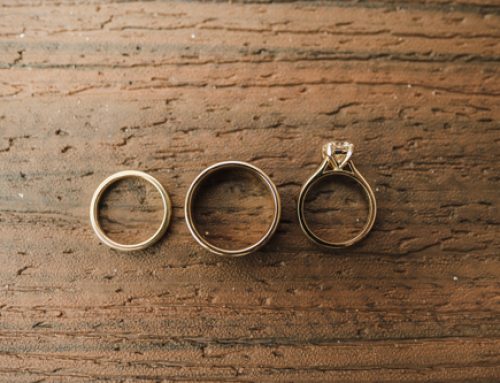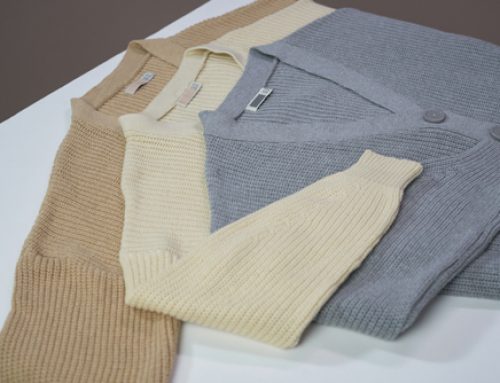Tungsten and diamond are two of the strongest known materials and therefore are commonly used for applications where durability is key. Diamond is harder overall, measuring a 10.0 on the Mohs hardness scale (the highest possible measurement, while tungsten falls between 7.5 and 9.0.
Despite this, tungsten may be preferable over diamond for some applications. Typically, this will be because tungsten is significantly cheaper than diamond. Overall though, both materials are highly resistant to scratches, warping, and breakage.
Tungsten
Tungsten is a fairly rare, naturally occurring metal. Many of its alloys are naturally occurring, but many are also manufactured to produce specific desired characteristics. Tungsten has been used for industrial and electrical applications since the early twentieth century. Notably, this includes the use of tungsten as lightbulb filaments and as an important tooling material in WW2. However, more recently, the material has become popular for use in jewelry as more durable jewelry has fallen into demand.
Hardness
In the context of minerals, hardness describes how scratch resistant the material is. As mentioned, tungsten measures between 7.5 and 9.0 on the Mohs hardness scale. It is known as one of the strongest known naturally-occurring materials. However, while extremely strong and durable, tungsten is very brittle in its pure form. As such, while it is scratch resistant, it is also at risk of cracking or shattering. This is why tungsten alloys are typically used, as this can improve the overall toughness.

Characteristics
Other characteristics of tungsten in its raw form include:
- Gray in color;
- Difficult to work;
- Highest melting point of any pure metal;
- Highest tensile strength of any pure metal;
- Lowest vapor pressure of any pure metal;
- Highly resistant to corrosion.
Depending on the desired application, different tungsten alloys will be used or created to adjust the characteristics of the metal compared to its raw form. Common tungsten alloys include:
- Tungsten nickel iron: It has a higher density, melting point, ductility, and strength, and is often used in environments with extreme temperatures.
- Tungsten nickel copper: This alloy is nonmagnetic and highly conductive, and therefore is used in conditions where a non-magnetic metal is needed, notably in electronic devices.
- Tungsten carbide: It is less brittle than raw tungsten, can withstand high temperatures, and does not corrode easily, making it a highly resilient material for many possible applications.
Although each alloy is popular for various uses, tungsten carbide is the most popular due to its durable nature.
Applications
The unique properties of tungsten mean that it is widely used for a variety of purposes. Its applications include:
- Electrodes;
- Heating elements;
- Filaments in light bulbs;
- Filaments in cathode ray tubes;
- Cutting tools;
- Drilling tools;
- Various mining tools;
- Engine parts;
- Circuit breakers;
- Pigments;
- Dyes;
- Inks;
- X-ray anodes;
- Anti-scatter plates;
- Various containers;
- Bullets;
- Armor;
- Various military materials;
- Rings;
- Bracelets;
- Used in various other pieces of jewelry.
Essentially a tungsten alloy may be used for virtually any application where a strong metal is needed.
Diamond
Diamond is a naturally occurring material that is composed of almost pure carbon and features atoms arranged into a crystal structure. However, they can also be made artificially. Diamonds have been used throughout history, with the earliest recorded discovery and use of them in 2500 BC in India. Diamonds continued to be valued for their strength and beauty, and are commonly used today in engagement and wedding rings.
Hardness
Diamond is the hardest naturally occurring material, with a measurement of 10.0 on the Mohs hardness scale. While harder materials have been artificially developed, diamond is still a valued and plentiful resource. A diamond is so hard that the only naturally occurring mineral that can scratch a diamond is another diamond.
Characteristics
Diamonds have many unique characteristics beyond their incredible hardness. These characteristics include:
- Many potential tints or colors;
- Rigid and easily fractured;
- Highest thermal conductivity of any natural mineral;
- Least compressible of any natural mineral;
- Dispersion of light in different colors (e.g. sparkling);
The appearance and individual features of diamonds can vary widely. As such, while diamonds are prized for their use in jewelry, few are considered gemstone quality. Only approximately 30% of diamonds mined worldwide are considered gemstone quality. The gemstone quality and value of a diamond are determined by the four Cs: cut, color, clarity, and carat weight.
Applications
Because of their hardness, prevalence, and pleasing appearance when cut, diamonds are used for a wide variety of applications worldwide. These applications include:
- Rings;
- Earrings;
- Necklaces;
- Use in various pieces of jewelry;
- Cutting tools;
- Drilling tools;
- Grinding wheels;
- Polishing tools;
- Engraving tools;
- Windows and lenses;
- Experimental medical treatments;
- Various medical instruments;
- Audio enhancement;
- Various uses in DJ equipment;
- Record player needles;
- Various uses in makeup;
- Heat sink material.
Like tungsten, diamond is widely used for applications that require extremely hard materials to complete effectively.
Tungsten Carbide vs Diamond
Tungsten carbide is an alloy composed of equal parts tungsten and carbon. This alloy was developed to reduce the brittle nature of pure tungsten and improve its durability. Not only does this combination improve the efficacy of tungsten in industrial settings, but it also extends the lifespan of tungsten products. It can significantly increase the value as the products are less likely to break prematurely.
Due to these benefits, tungsten carbide is widely considered a particularly valuable tungsten alloy. In terms of its use in jewelry, this benefit is evident in how difficult it is to crack or shatter products such as rings, which may experience significant wear and tear from daily use.
While tungsten carbide is more durable than raw tungsten, it still has a lower hardness compared to diamond.
While the hardness of tungsten and diamond makes them highly useful in many contexts, that can be a drawback as well. For example, while tungsten carbide can make for a highly durable ring, it also creates limitations in terms of adjustment and resizing. Tungsten carbide is too hard to allow for resizing.
However, in comparison to diamonds, tungsten carbide is often more ethically sourced, environmentally friendly, and more low-maintenance. When comparing these factors, you must consider which is most important to you and your needs.





Leave A Comment